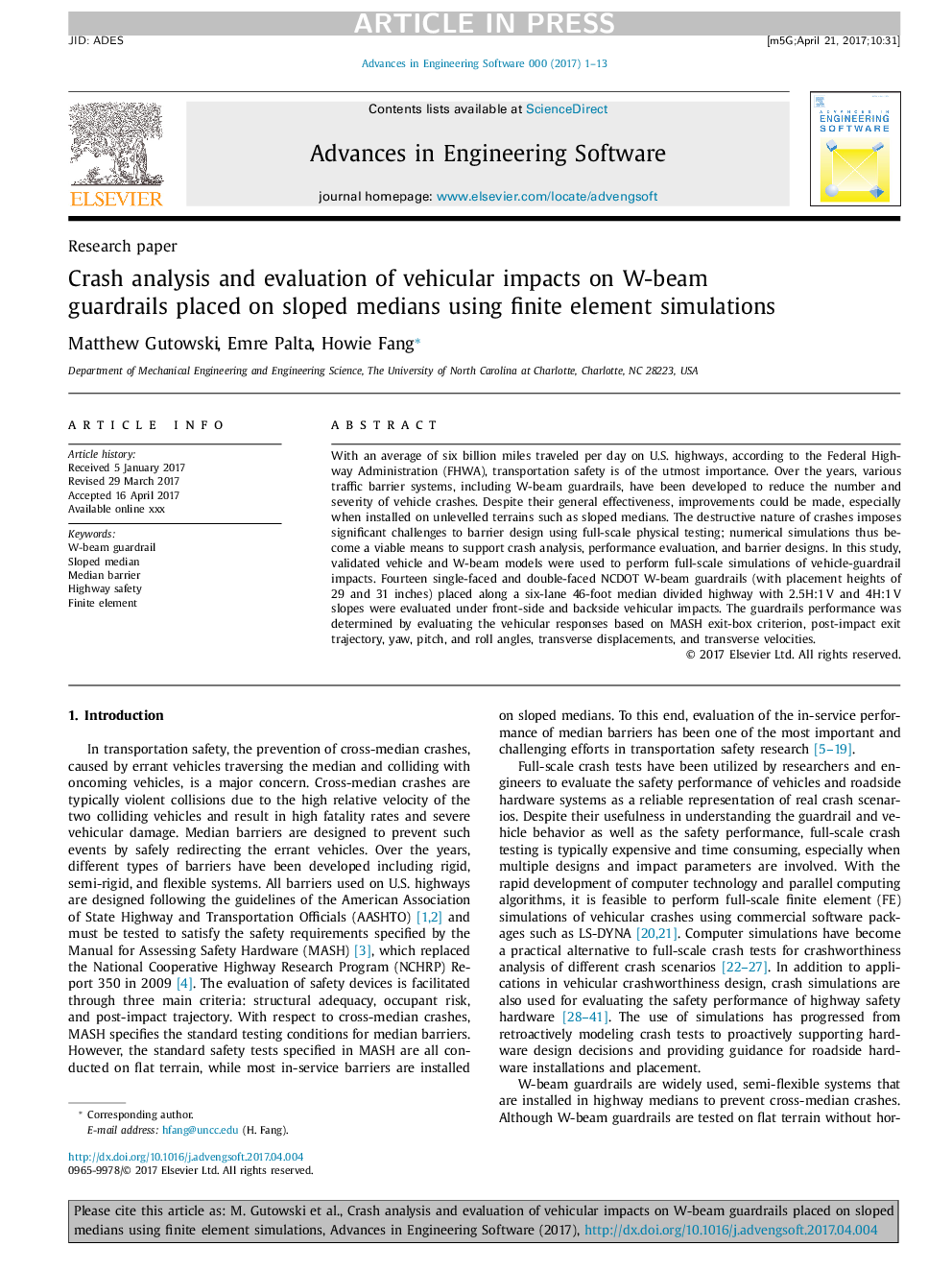| Article ID | Journal | Published Year | Pages | File Type |
|---|---|---|---|---|
| 4977904 | Advances in Engineering Software | 2017 | 13 Pages |
Abstract
With an average of six billion miles traveled per day on U.S. highways, according to the Federal Highway Administration (FHWA), transportation safety is of the utmost importance. Over the years, various traffic barrier systems, including W-beam guardrails, have been developed to reduce the number and severity of vehicle crashes. Despite their general effectiveness, improvements could be made, especially when installed on unlevelled terrains such as sloped medians. The destructive nature of crashes imposes significant challenges to barrier design using full-scale physical testing; numerical simulations thus become a viable means to support crash analysis, performance evaluation, and barrier designs. In this study, validated vehicle and W-beam models were used to perform full-scale simulations of vehicle-guardrail impacts. Fourteen single-faced and double-faced NCDOT W-beam guardrails (with placement heights of 29 and 31 inches) placed along a six-lane 46-foot median divided highway with 2.5H:1Â V and 4H:1Â V slopes were evaluated under front-side and backside vehicular impacts. The guardrails performance was determined by evaluating the vehicular responses based on MASH exit-box criterion, post-impact exit trajectory, yaw, pitch, and roll angles, transverse displacements, and transverse velocities.
Related Topics
Physical Sciences and Engineering
Computer Science
Software
Authors
Matthew Gutowski, Emre Palta, Howie Fang,
